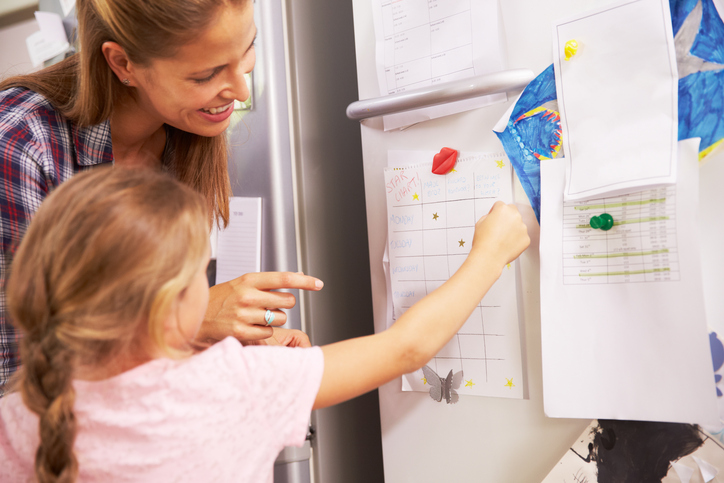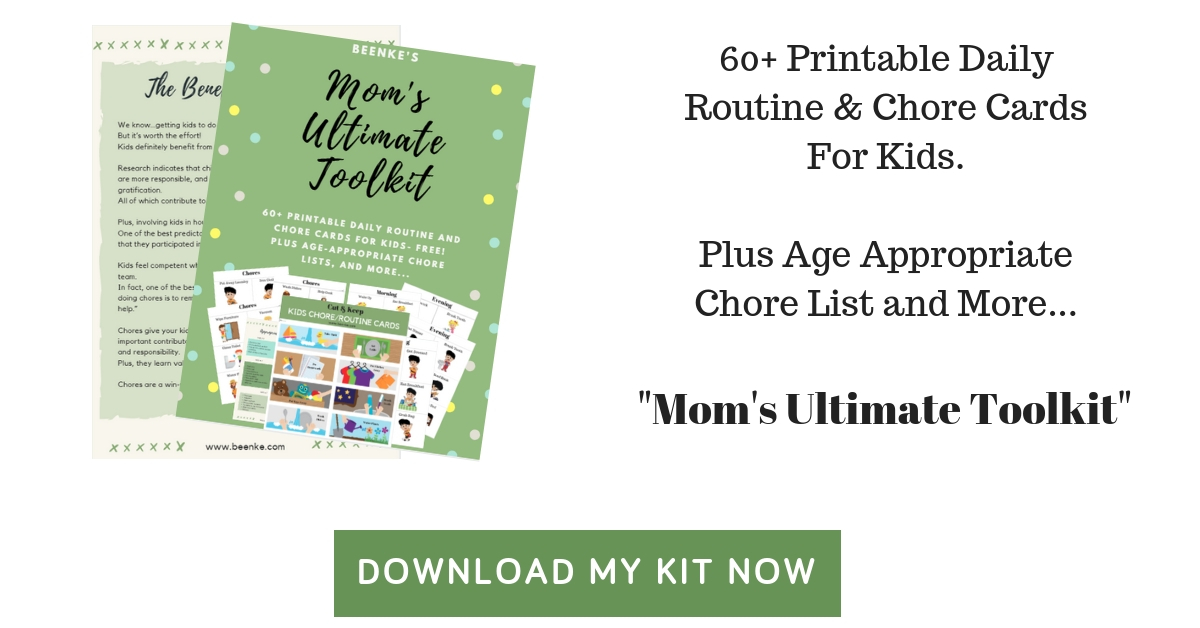When it comes to using a reward chart for kids, we’ve heard some differing opinions.
Some parents worry that using a tool like a chore chart or sticker chart teaches kids to behave only because they’ll get something.
They fear this could lead to kids who behave well not because it’s the right thing to do, but because they want to earn more rewards.
We get this argument. And while we agree with it… to a point (more on this later). We also think that if used properly, in the right situation, a reward chart can provide the framework for kids to build long-lasting positive habits.
In other words, we think a reward chart done the right way can be a helpful tool in a parent’s arsenal.
It provides positive reinforcement for tasks your child has trouble with to make the desired action become routine. So eventually the action becomes a part of your child’s general habits, and a reward is no longer needed.
Tired of battling over cleaning rooms, doing homework, or going to the potty? A responsibility chart can help.
Here’s how to use a reward chart to get better results.
To Reward Or Not To Reward, That Is The Question
As we mentioned above, we’ve heard from some parents and counselors who are not sold on the benefits of using a reward chart.
The most discussed risk in association with this practice is that it will undermine a child’s intrinsic motivation. Kids start to behave ONLY when they get a reward and not just because they value traits like kindness.
And as we said, we agree with this risk…to a point.
We are NOT proponents of offering children tangible rewards in exchange for caring behavior, because we too think it may reduce a child’s natural tendency to help or feel empathy for others.
In other words, we’re not big on behavior charts for kids that offer rewards for what researchers call “prosocial behavior”. These are things like; sharing, cooperating, gratitude, helping others, etc.
We think that kids should be taught values like this with more of a positive parenting encouragement approach.
This is where you acknowledge when your child engages in a good prosocial behavior. Then you talk about what it felt like to do the behavior and encourage more of the same.
This helps kids internalize motivation and want to do these things because it’s the right and kind thing to do. The “reward” is feeling good about helping others, not some kind of prize.
But for other, more task-oriented behaviors, like using the potty, reading 20 minutes each night, practicing the piano, or doing chores… we think using a reward chart can be a great motivator!
When working on building good habits, we don’t see any issue with adding a few stickers and rewards into the mix to make the habits stick.
So when your child is perfecting a new skill or adding a task to their routine, try a reward chart. Here’s how to use one so it really works.

Reward Chart How-To Guide
1. Keep It Simple:
Start with just one to three tasks you’d like your child to work on. If the reward chart is overly complicated, it’s easy for kids to get overwhelmed and give up.
Plus you don’t want every behavior to be tied to a reward, just new ones being added to your child’s routine.
2. Set Up The Chart:
You can choose from lots of different styles of reward charts, they make them in magnet or sticker form. You can also choose to make one yourself!
Older kids might even like to create their own chart, perhaps with a drawing or photo of the reward they’re trying to earn.
When you’ve decided on your chart, decide which stickers or tokens to use. Star or happy face stickers work well for younger kids, whereas older children might prefer points.
Be sure to put the chart somewhere your child can easily see it.
3. Be Specific On The Tasks:
Make sure the actions you are targeting are clear to you and your child.
Instead of “read”, try “read for 15 minutes every night”. Or instead of “feed the dog”, it’s better to say “feed the dog every morning before breakfast”.
4. Be Specific On The Reward:
Make it clear what the prize will be and how many stickers, points, etc. it will take to get to the prize.
Also, mix up the prizes now and then. Kids get bored if it’s the same thing over and over.
Maybe one week do a tangible prize, like pencils or stickers, and one week do an experience prize like a trip to the park or a movie night. Keep it interesting!
Download Mom’s Ultimate Toolkit
To help you on your quest to establish regular routines and chores in your household, we put together “Mom’s Ultimate Toolkit”.
Inside you’ll find helpful information, tips, and visual reminders you can use to set your kids on the path to responsibility.
5. Start Small With Prizes:
This is especially true for younger kids who have a hard time dealing with delayed gratification.
Choose small prizes that they can realistically earn in a week to start, so they get the positive reinforcement from doing the task right away. They’ll also get more frequent reinforcement to keep going.
Over time as kids get older, they can start to save points to use towards bigger rewards.
This can teach them how to “earn” the things they want and how to manage a rudimentary budget.
6. Be Consistent:
Always put the sticker, mark, token, etc. on the chart right after the task you’re reinforcing is completed.
You can even have your child do the honors to increase their sense of ownership and pride in completing the task.
Be sure to offer some words of encouragement to your child so they keep going!
7. Don’t Punish:
The whole point of a reward chart is to use positive reinforcement to build good habits.
So don’t remove stickers that were already earned for bad behavior.
Instead, focus on encouraging your kids to keep improving and earning more points in the future.
Punishing your child for non-performance just makes them less motivated, not the result you’re looking for.
8. Make A Plan To Move On:
After a month or two, once your child has shown they’ve mastered a task or habit, shift the chart to work on something new.
Don’t keep rewarding a behavior once it’s become part of the routine. You want a child to learn self motivation to keep it going.
Do praise them for all the hard work they put in and let them know they’re so awesome at the task they no longer need a chart for it.
Then set up a reward chart for something else you want your child to work towards.
When used correctly, and not indefinitely, reward charts can be a great tool to help kids build good habits and add new tasks to their regular routines!
Related: Build Character And Teach Responsibility – Chore Chart Fort Kids
SHARE how to use a reward chart so it really works on Facebook and Pinterest by clicking the buttons below.













